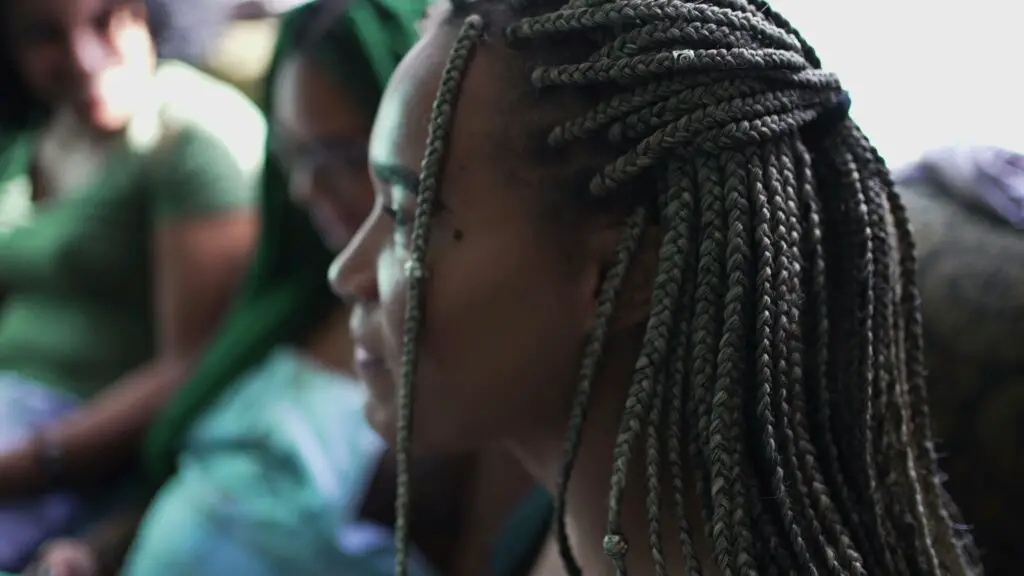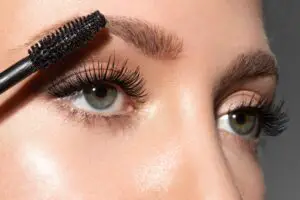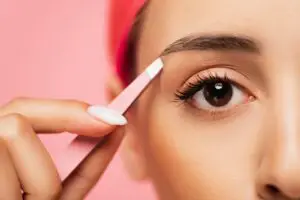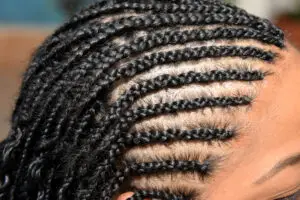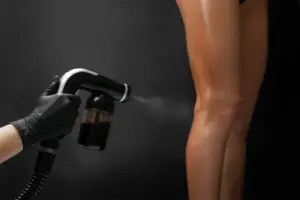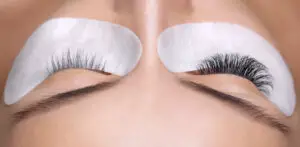Box braids are a popular and versatile protective hairstyle for natural hair. They offer a low maintenance solution and come in various styles, making them an attractive option for many individuals. However, one question that often arises is whether box braids hurt or cause discomfort during and after the braiding process.
It is important to note that box braids should not hurt while being installed. Although it is normal for the scalp to feel tender due to the extra weight of the braids, the feeling of tightness or pain is a sign that they are too tight and could lead to hair and scalp damage. If you experience discomfort during the braiding process, it’s essential to inform your hairstylist in order to avoid possible complications.
While box braids can sometimes cause discomfort due to their tightness, there are ways to alleviate the pain and enjoy the many benefits these braids offer. Proactively communicating with your hairstylist and following proper aftercare procedures can prevent excessive discomfort and allow you to fully enjoy this timeless and low maintenance hairstyle.
Do Box Braids Hurt
Box braids, a popular and protective hairstyle, can potentially cause discomfort or pain in some cases. However, this is not a universal experience, as the level of pain or discomfort depends on various factors. In this section, we will examine different aspects that could contribute to pain when wearing box braids.
Factors Contributing to Pain
- Braid Size: The size of your braids can play a role in determining the level of pain and discomfort you experience. Large box braids generally cause less pain, while thin box braids may lead to more discomfort due to the added hair extensions and extra weight they carry.
- Braid Tightness: Box braids should never cause pain during the braiding process itself. However, if they are too tight, they can lead to discomfort or tenderness on the scalp. Always communicate with your braider about the tightness and be sure to adjust accordingly to avoid damage to your hair and scalp.
- Scalp Sensitivity: Each person’s scalp sensitivity differs, which means some individuals may naturally experience more discomfort than others when wearing box braids. If your scalp is particularly sensitive, you might want to consider alternative protective hairstyles that cause less pressure and tension on your scalp.
- Hair Care and Maintenance: Proper hair care and maintenance is essential when wearing box braids to prevent discomfort and potential damage to your hair and scalp. Make sure to moisturise your scalp regularly, avoid excessive tension when styling your braids, and give your hair a break after removing braids to prevent excessive stress on your hair and scalp.
- Duration of Box Braids: Wearing box braids for extended periods can also contribute to pain and discomfort, as prolonged tension on your hair and scalp may lead to issues such as traction alopecia or other forms of hair damage. Be sure to remove your box braids after 6-8 weeks to minimise the risk of developing these problems.
Preventing Pain During Installation
Choosing the Right Hairstylist
Finding a knowledgeable and experienced hairstylist is crucial when it comes to avoiding pain during the installation of box braids. A competent stylist understands the importance of not braiding too tightly, as tight braids can cause discomfort, pain, and even hair damage.
It’s essential to communicate your concerns and expectations with the stylist beforehand, and if you feel any pain during the process, speak up and ask for adjustments. Additionally, it’s beneficial to ask for recommendations from friends or family who have had positive experiences with box braid installations.
Proper Hair Preparation
Preparing your hair before getting box braids can significantly reduce the chances of pain and discomfort during and after installation. Here are a few steps to help you prepare:
- Hair washing: Wash and condition your hair to ensure it’s clean and hydrated. This will make the braiding process smoother and less stressful on your hair.
- Detangling: Gently detangle your hair using a wide-tooth comb or brush to remove any knots or tangles. This makes it easier for the stylist to work with your hair, reducing the likelihood of pain from tugging or pulling.
- Moisturising: Apply a leave-in conditioner or moisturising product to your hair to keep it soft, healthy, and manageable during the installation process. This will also help to minimise any tension or stress on your hair.
- Trimming: If necessary, trim any split ends or damaged hair before getting box braids. This ensures your hair is in its best possible condition, reducing the risk of pain due to braiding unhealthy hair.
By carefully selecting a skilled hairstylist and properly preparing your hair, you can effectively prevent pain during the installation of box braids. Keep these tips in mind and enjoy your new, stylish look without unnecessary discomfort or potential damage.
Easing Pain After Installation
At-Home Remedies
If you’ve recently installed box braids and are experiencing discomfort, there are several at-home remedies that may help alleviate your pain. Firstly, try using a thin comb to gently loosen the tension at the scalp. Slip the thin end of a long-handled fine-tooth comb underneath tight braids to get relief.
Another option is to apply a cold or warm compress to the affected area, which can help reduce inflammation and soothe soreness. Moreover, you can use over-the-counter painkillers, such as ibuprofen or paracetamol, to help manage the discomfort during the first few days following installation.
Additionally, incorporating a gentle scalp massage with essential oils can help increase circulation and relax the hair follicles, ultimately providing relief.
Professional Assistance
If the pain from your box braids persists or worsens, it’s essential to seek professional assistance. Communicate with your stylist and let them know about the pain you are experiencing. In some instances, they may be able to offer solutions or adjust the braids to alleviate the pressure on your scalp.
Remember, it’s not uncommon for box braids to feel uncomfortable at first, but if the pain becomes unbearable, it’s crucial to consult a hair care professional. They can help determine whether the braids are too tight or if any damage has been caused to your hair or scalp. It is important to address any issues promptly to avoid long-term problems, such as hair loss or tension headaches.
In summary, if you’re experiencing pain after installing box braids, try employing at-home remedies or seek professional help to alleviate discomfort and prevent potential damage to your hair and scalp.
Long-Term Effects of Tight Box Braids
Tight box braids can have some long-term effects on your hair and scalp, especially if they are done too tightly and consistently. In this section, we will discuss two common long-term effects: Hair Loss and Scalp Damage.
Hair Loss
Tight box braids can cause a type of hair loss called traction alopecia. This occurs when there is constant pulling and tension on the hair roots, leading to hair breakage and weakened hair follicles. The continuous pressure from tight box braids can disrupt the hair growth cycle, causing the affected hairs to eventually stop growing.
To prevent hair loss from tight box braids, it is essential to maintain a healthy hair care routine and ensure braids are not installed too tightly. Regularly moisturising the scalp, using suitable hair products, and taking breaks between protective styles can help minimise the risk of traction alopecia.
Scalp Damage
Aside from hair loss, tight box braids can cause scalp damage. Consistent tension on the scalp can lead to irritation, inflammation, and even the formation of small bumps or sores. In severe cases, this scalp damage can become infected, requiring medical treatment.
To avoid scalp damage, follow these tips:
- Communicate with your hairstylist about the tension level during installation.
- Avoid excessively small and tight box braids; opt for larger and looser braids.
- Periodically massage your scalp with oil to improve circulation and promote healing.
- Remove tight braids immediately if you experience intense pain or discomfort.
By being conscious of the potential long-term effects of tight box braids, you can take preventative measures to maintain the health and wellbeing of your hair and scalp.
When to Remove Box Braids Due to Pain
Box braids can indeed cause some discomfort, especially if they have been installed too tightly. This pain can manifest as a tugging sensation on your scalp and even lead to tension headaches. The pain should typically ease out after a few days as your hair gets used to the braids. However, continuous pain or increased severity means you may need to remove the braids for the sake of your hair and scalp health.
Your neck and head may hurt simultaneously due to box braids. If you find yourself constantly reaching for painkillers, it’s a good indicator that it’s time to remove your braids. Remember that pain is your body’s way of telling you that something isn’t right, and it’s crucial to listen to such signals.
In some cases, tightness and pain can cause hair loss, called traction alopecia. If you notice excessive hair shedding or your hairline receding after installing box braids, then you might want to remove the style immediately. Prolonged pressure on the scalp can weaken hair follicles, leading to permanent damage.
An effective way to relieve pain is by loosening the tight braids. You can use the thin handle of a comb to decrease tension at the scalp by slipping it under the braids. Alternatively, you can soothe the discomfort by running your braids under water which might help loosen the braids and make them less painful.
In conclusion, it’s essential to be vigilant about the health of your hair and scalp when wearing box braids. Experiencing continuous pain, increased severity, hair loss or a receding hairline could all be indicators that it’s time to remove the braids and give your hair a much-needed break.

I’m Jennifer a beauty and wellness expert. I believe in promoting a sustainable and healthy lifestyle from within. Helping people feel good is my passion; whether it’s teaching yoga or offering skincare advice.

